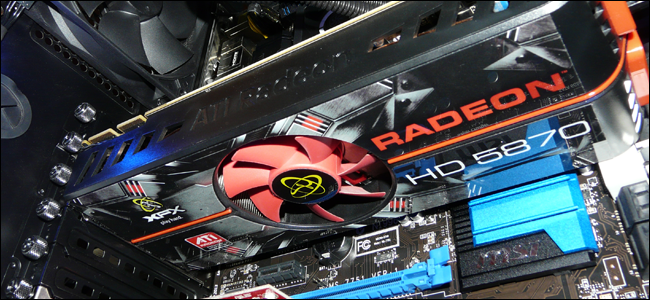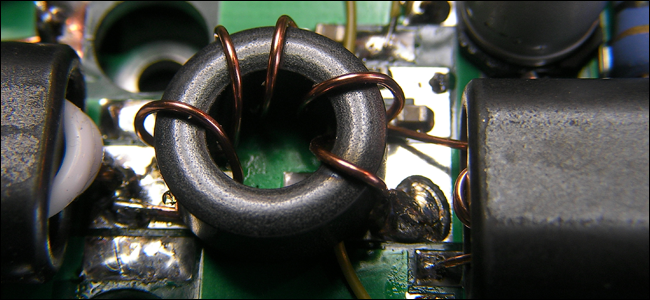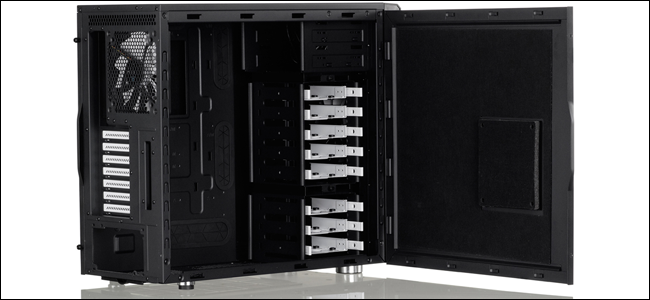Modern PCs are ridiculously powerful, so creature comforts like low noise levels have become more important. Most noise comes from your cooling fans, spinning drives, and optical drives (if you still have one), though there's one other lesser-known noise source: a phenomenon called "coil whine." It's a high-pitched electronic squeaking or scratching noise, and it's really annoying.
What Is Coil Whine?
On a pure technical level, coil whine refers to an undesirable noise emitted by an electronic component vibrating as power runs through an electrical cable. Just about anything with a power source can create coil whine to some degree, but it's usually caused by an electrical current going through a power-regulating component like a transformer or inductor, causing its electrical wiring to vibrate at a variable frequency. This happens in almost all electrical devices, usually at a frequency and volume that's inaudible to humans, especially inside a metal or plastic PC case.
But when you're dealing with high-powered components in modern gaming PCs, especially the graphics card and power supply, these vibrations can be audible. This is especially true for anyone who's sensitive to high-frequency noises. In bad cases, you can actually hear the pitch of the coil whine change as the GPU draws more or less power, and the electrical frequency across various components shifts. It might be particularly noticeable when running a 3D game or high-intensity graphics application. Coil whine can be especially noticeable---not to mention frustrating!---on otherwise "silent" PCs, like low-power home theater PCs or gaming PCs with a liquid cooling system.
Coil whine is really nothing to be concerned about. It can be annoying, of course, but it isn't like a rattling engine or a squeaking wheel---the noise is a byproduct of your PC and graphics card's normal operation. Your system isn't losing any performance or longevity because of coil whine.
(Note: if you hear a distinct hissing or high-pitched whistling instead of a buzz or scratch, that might be the altogether different phenomenon known as "capacitor squeal." This is something to be concerned about, since it indicates a failing component.)
What Can I Do About It?
Sadly, there isn't an easy fix for coil whine, like an updated driver or a Windows setting. It's a physical property of your graphics card (or any other component you can hear exhibiting the noise). The fixes for the problem, therefore, are going to be physical in nature. You have a few options.
Dampen it. If your PC is making too much noise, trap it inside the case. Different PC enclosures have different audio properties, and some manufacturers make their cases specifically to dampen sound and vibration. Generally speaking, a case with more dampening material, like high-density foam or fabric, will be better than bare steel or aluminum at hiding noise levels. If your case has optional plates or blockers for fan mounts that aren't in use, make sure they're screwed into place. Keep in mind that moving your entire PC to a new case is a time-consuming process, but not a particularly difficult one if you already know how to swap out a graphics card or RAM.
Replace it. If you can pinpoint which part is causing the whine you could just replace it. It's probably the graphics card itself (especially if you're noticing the problem immediately after installation, or when playing a graphics-intensive game), but it could be the power supply or less frequently something like the motherboard or CPU cooler. Unfortunately, coil whine alone might not be enough for your graphics card or power supply maker to accept a warranty replacement---and it may not be worth hundreds of dollars for you to replace the part. Contact customer support to see about your options. (If you're still within the return window, you might consider returning it to the retailer.)
Just deal with it. As we mentioned earlier, there's nothing physically wrong with a PC that emits coil whine. If you have a typical gaming PC, odds are pretty good that the noise itself isn't much louder in terms of decibels than your cooling fans. The easiest way to solve the problem is just to ignore it, or to use sound-blocking headphones so it simply isn't a factor.
There are more extreme options for dealing with coil whine, such as manual rewiring a component or applying non-conductive insulating material (like hot glue) to the affected part, but we don't recommend them---you're much more likely to cause a new problem than to solve an existing one.
If your hearing is very good and you're especially bothered by coil whine, the best way to avoid it is to avoid graphics cards and other products that are known to cause it in the first place. Before buying a new PC component, search for the product name or model number and "coil whine" in Google, and see if there are complaints from current owners. Buy from stores with good return policies, and run your PC through a rigorous benchmarking program like Heaven or Prime95 as soon as you install it. If all else fails, put your computer in another room and run some long cables so you can't hear it.
Image credit: Flickr/kc7fys



